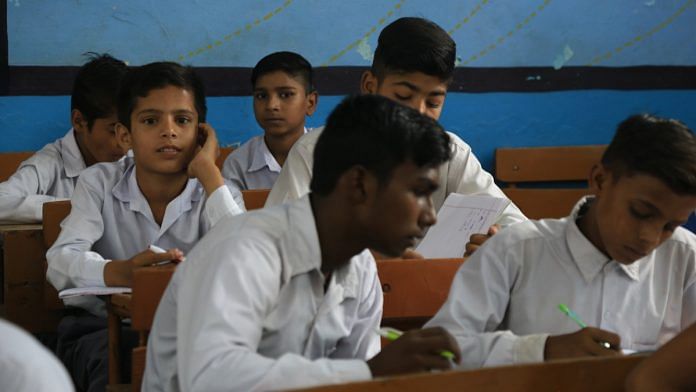Class 10 students in Kashmir’s Pulwama & Shopian districts excelled with highest pass percentage, even though schools there were closed for more than 100 days.
New Delhi: Community schooling and continuous efforts by the locals is what led to excellent Class 10 results in south Kashmir’s Pulwama and Shopian districts, the most disturbed region in the Kashmir Valley last year, say local residents and students.
The Jammu and Kashmir State Board of School Education (JKBOSE) announced the Class 10 results for Kashmir division on Saturday, and Pulwama and Shopian districts in south Kashmir recorded the highest pass percentage. While Pulwama recorded a pass percentage of 84.5 per cent, the pass percentage in Shopian was 83 per cent. Both these figures are higher than that of Srinagar, which recorded a pass percentage of 81.9 per cent.
The overall pass percentage in Kashmir this year was 75.44, compared to 62.94 last year.
According to the state government data, in 2018, schools in Pulwama district were shut for 170 days and, in Shopian they were closed for 118 days by the administration due to fear of disturbance. This shutdown was apart from the number of regular holidays that the students got.
During the 2016 unrest in Kashmir following the killing of Hizbul Mujahideen commander Burhan Wani, 32 school buildings were burnt and most of them were in south Kashmir. In 2017, the HRD Ministry had devised a roadmap for Kashmir to improve the education scenario in the state. Construction of school buildings was also a part of the ministry’s plan. However, no construction has happened so far in Pulwama and Shopian districts.
Locals lend a helping hand
While the district administration credited the government’s efforts for the results, school teachers said it was largely because of the intervention by the local residents.
“Schools were shut down for most part of the academic year and there was no way they could have completed their syllabus. It was largely because the locals ran community schools for students in several parts of the districts, that they were able to study,” said Masood Taing, a teacher at a government school in Shopian.
Community schools are like coaching classes, where a couple of teachers gather to teach students either at somebody’s home or a community centre, depending on availability. There are more community schools in rural Kashmir than in urban areas.
“We used to study at home most of the time because schools were shut. We used to write down all the doubts and clarify them with our teachers when schools reopened. Community schools also shut down during curfew in the town, (but) they were mostly open in villages,” said Abid Hassan, a student from Pulwama district who scored 88 per cent.
Reham Mir, who scored 90 per cent marks, also said he studied at home and with the help of a community school.
Also read: A colourful revolution is sweeping across Punjab schools without a single paisa from govt
Praise for students
Malik Mohammad, a resident of Pulwama, praised the efforts of the students in south Kashmir.
“Schools were closed for more than five months in Pulwama district. How can one expect students to finish their syllabus? Despite all these odds they have managed to study and not just study, get excellent results. All of this is because they are self-motivated and get help from locals who run community schools,” Mohammad said.
“Students from south Kashmir are traditionally known to be excellent in studies because they know that they will not get support from schools, so they have to be self-dependent,” he added.
G.N. Itoo, director of school education, gave all the credit to students. “Despite all the problems students have shown excellent results in Shopian and Pulwama. They are all very hard-working students,” he said.
Also read: 20 lakh seats reserved in private schools for poor children but only 20% get filled



